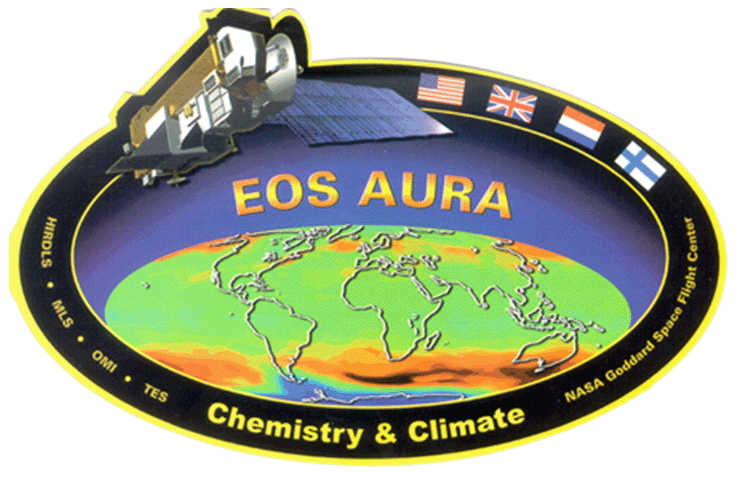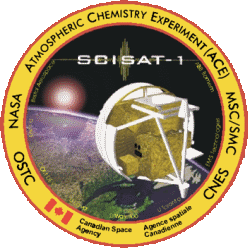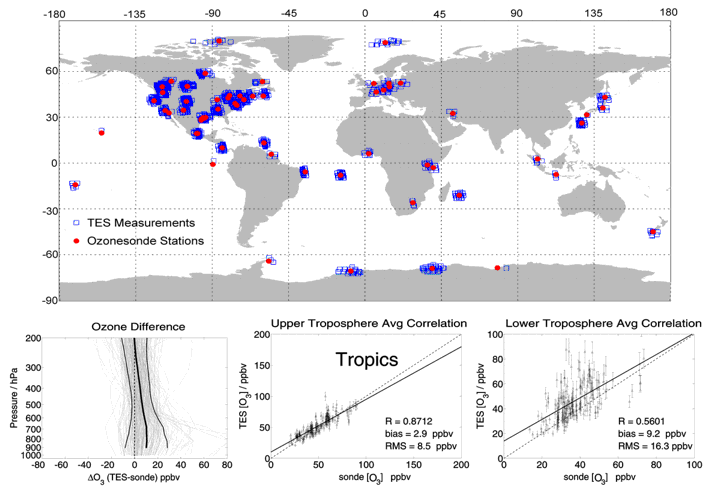Ray Nassar - Research
My research involves the interpretation of satellite observations of Earth's atmosphere, frequently making use of models for direct comparison or through data assimilation. Models such as the chemical transport model GEOS-Chem are powerful tools for working with satellite observations and improving our understanding of the chemistry, transport, variability and trends of chemical species in the atmosphere and their interaction with the biosphere. This very interdisciplinary area of environmental research spans the more traditional fields of chemistry, physics, physical geography and meteorology, and has very important implications for environmental policy.
Tropospheric Emission Spectrometer (TES): A high resolution Fourier Transform Spectrometer on the NASA Aura Satellite which measures infrared emission spectra of Earth's atmosphere with an emphasis on the troposphere.
Atmospheric Chemistry Fourier Transform Spectrometer (ACE-FTS): A high resolution solar occultation infrared Fourier Transform Spectrometer on the Canadian Atmospheric Chemistry Experiment (ACE) satellite. As a member of the ACE science team for many years, I have been involved with many aspects of the ACE mission, both before and after launch.
My research also involves measurements by a number of other new or future satellite missions, such as Japan's multi-agency Greenhouse Gases Observing Satellite (GOSAT) and the "carbon copy" reflight of NASA's Orbiting Carbon Observatory (OCO-2). Additionally, I am involved with other satellite missions that are currenly in the proposal/planning phases.



Main Research Topics
1) Greenhouse Gases and the Carbon Cycle
The primary focus of my current research is the measurement and modeling of greenhouse gases in order to understand their sources, sinks and general interaction with the biosphere. Carbon dioxide (CO2) and methane (CH4) are the most important anthropogenic greenhouse gases contributing to climate change and the predominant atmospheric components of the Earth's carbon cycle. I have worked with TES troposheric observations of CH4 (Payne et al., 2009) and CO2 (Kulawik et al., 2010). Using mid-tropospheric observations of CO2 from TES, combined with surface flask CO2, estimates of CO2 surface sources and sinks can be obtained through inverse modeling. For this work, GEOS-Chem is used as the forward model, therefore I have recently made numerous improvements to the model CO2 simulation (Nassar et al., 2010).
The figure below shows CO2 annual fluxes for 2006 from a) the a priori based on GEOS-Chem, b) an inversion using only flask data, c) an inversion using only TES data, d) an inversion combining TES and flask data. These flux maps include only the 'natural' fluxes from 40 terrestrial biosphere and ocean regions, while fossil fuel burning fluxes are not optimized or shown in the figure. Aggregated Land, Ocean and Global annual natural flux values in PgC for 2006 are shown for each panel (Nassar et al., 2011).
I am now beginning to investigate the use of CO2 from other satellites such as GOSAT, which has better sensitivity to the lower troposphere where atmosphere-biosphere interactions occur.

CO is a key ozone precursor and a proxy for biomass burning and the incomplete combustion of fossil fuels. I have investigated global tropospheric ozone and CO using TES observations during the moderate El Nino of 2006 (Logan et al., 2008). More recently, using the GEOS-Chem chemical transport model, I investigated the impact on O3 and CO from factors such as enhanced biomass burning and changes to lightning and tropospheric convection resulting from El Nino (Nassar et al., 2009).